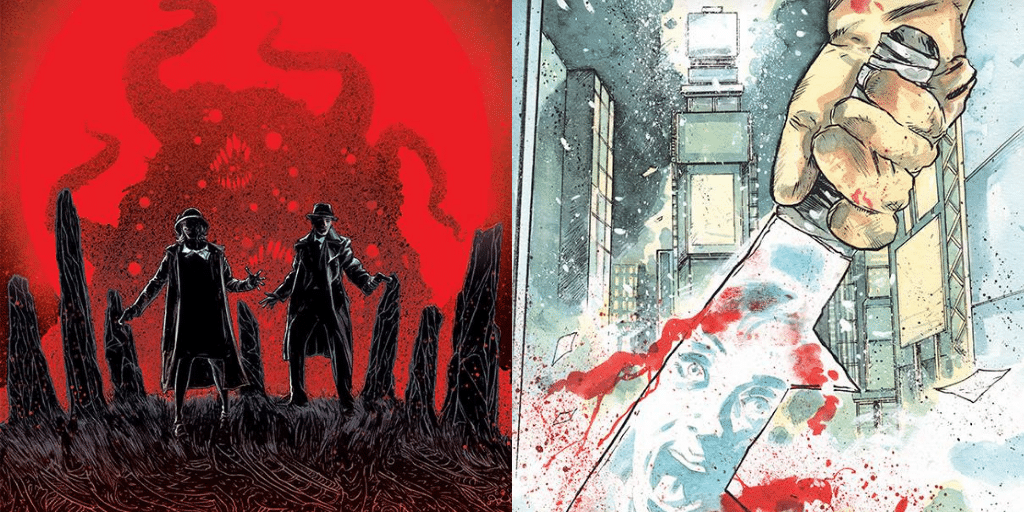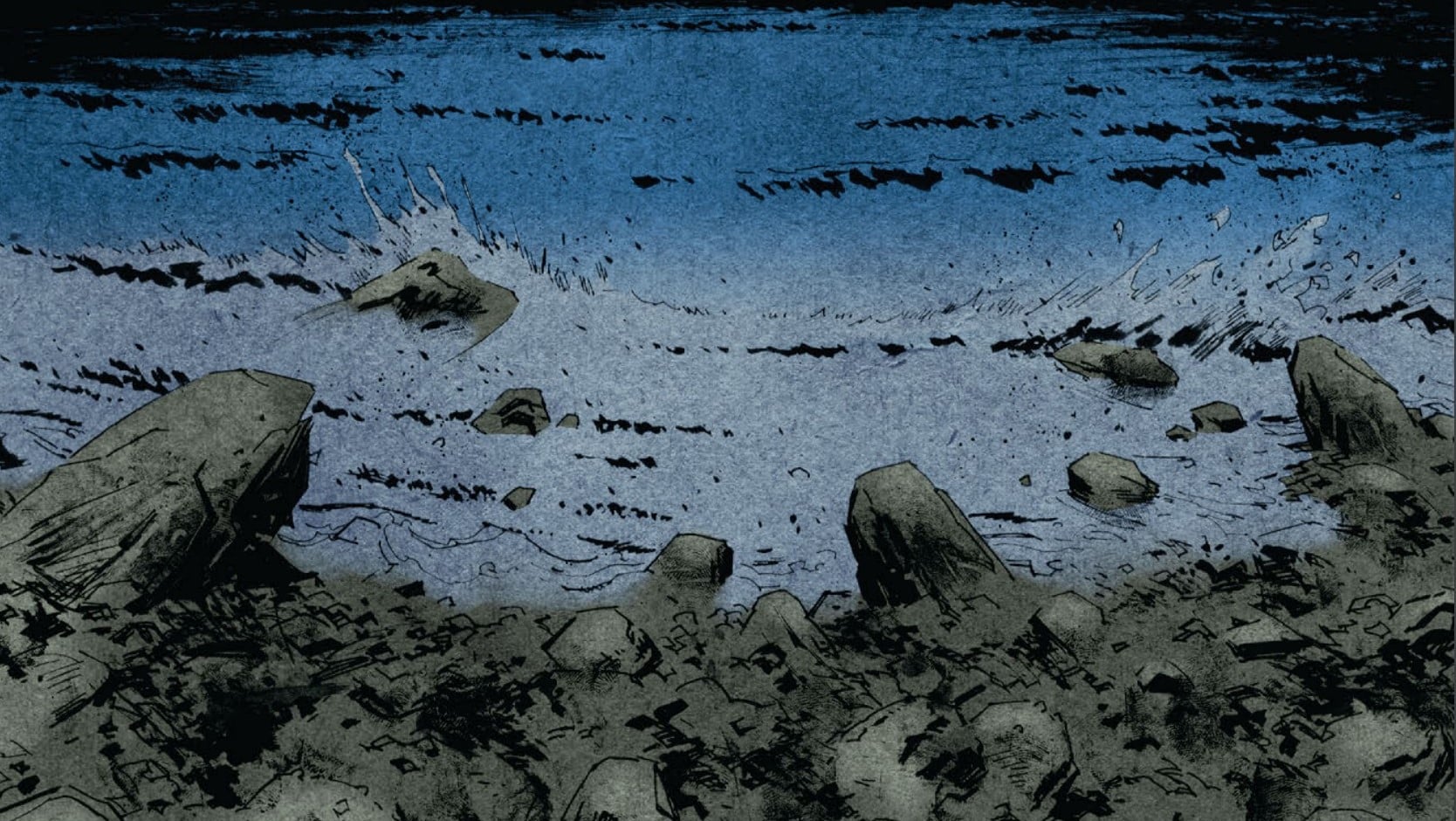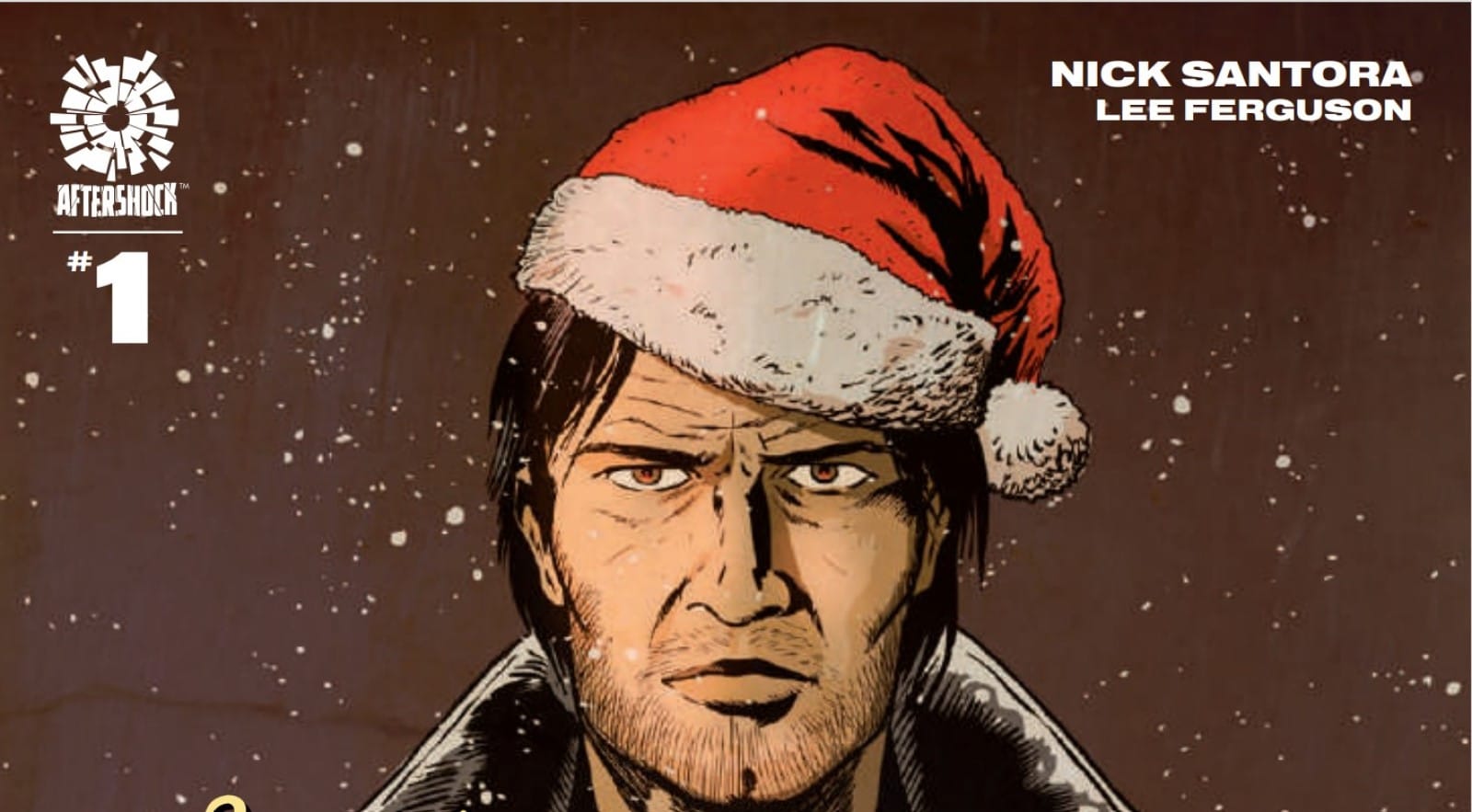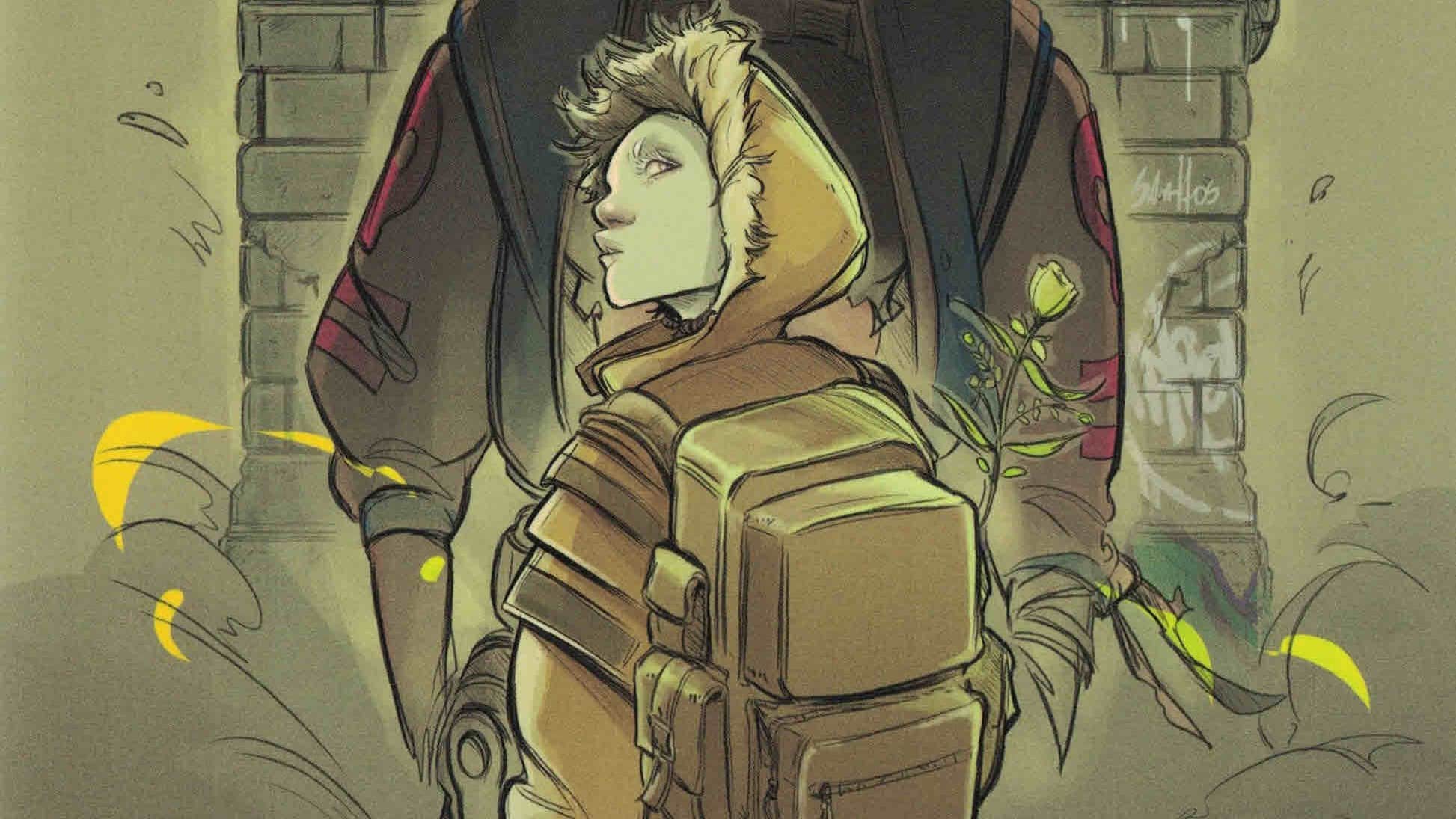A killer emerges and horrifies a city and the world … but then sticks around in Maniac of New York #1 by writer Elliott Kalan, artist Andrea Mutti and letterer Taylor Esposito.
The dead rise and the Old Ones awaken. More Lovecraftian horror abounds in Miskatonic #4 by writer Mark Sable, artist Giorgio Pontrelli, colorist Pippa Bowland and letterer Dave Sharpe.
Will Nevin: Justin! It’s good to be back, and it’s a big day: We’re starting our second series before we even finish our first. So gluttonous.
Justin Partridge: A proper double-feature! We promised last time that we were aiming to be the “grindhouse” of ComicsXF, and now we come to you with a whole double-feature. Slashers AND Lovecraftian horrors! The only thing missing are the Drive-In Totals.
WN: Before we get started with Maniac of New York #1 and the penultimate issue of Miskatonic, I wanted to do something to commemorate this occasion, us beginning another book. So I got me this, and I’m sharing it with you here, even though I ordered it months ago and it has nothing to do with the comics we’ve been talking about:
JP: Yog-Sothoth above, who doesn’t love a Sovereign Class?! These are Eaglemoss, yes? I covet so much stuff from them, y’all, it’s embarrassing. Throughout our work on this column, Will likes to occasionally prod me with the cool junk he’s got lying about his house, and now it seems that’s crossed over into the work proper.
Those ships look amazing though.They make me PINE for the days of ToyFare!
WN: Justin, you’re breaking my heart. That’s the Odyssey Class U.S.S. Enterprise-F from Star Trek Online. All the girth of the Galaxy Class with the fuckability of the Sovereign. I’ll blame my photography.
So, yes, Maniac of New York. *slaps hood* This son of a gun fucks. Real good. I just loved it — great execution of the premise, worked in some fine cop tropes, played on some even better slasher cliches and really has so much to say about living in (and subsequently ignoring) a pandemic. One of my favorite #1s in quite some time. What were your big takeaways before we get all in the details?
JP: OH MAN SO MUCH. It’s a tremendous debut issue just for starters! And like you said, it really makes a meal out of its premise. Both as an example of a “slasher” story and an engaging first issue of a comic series. You don’t often get horror books like this that thread that needle, but Maniac of New York comes to the table with a LOT, and pretty much all of it works.
WN: And Miskatonic #4? What was your overall view there?
JP: I will say, it’s definitely the weaker of our two charges here this column, but that doesn’t necessarily mean bad! This is the penultimate issue of Miskatonic (as opposed to the opening of Maniac of New York) and as such it has different loads to bear, both narratively and dynamically as the next-to-last issue of the series.
It’s also a fair sight plottier than Maniac, which kind of briskly follows through on its premise while Miskatonic is working with a number of reveals and setups for it’s incoming finale. It’s a different beast entirely in how it reads and operates, but one I still had fun with for sure!
WN: Let’s start with the shiny new toy.
Smooth as a Frozen Crystal Lake

WN: One of my big beefs with Miskatonic is that it’s herky jerky — few scenes seem to flow naturally from one to the next (although you say that’s a feature inherent to the source material and I believe you, much as I believe in the dark magicks). But this? Maniac is as smooth as a hot knife through viscera. What did you think of the overall pacing here?
JP: OH BIIIIIGGG, BIG TIME! And you’re absolutely right. A lot of “weird fiction” is inherently poorly laid out, and that’s usually something creative teams have worked with or against in their books. Miskatonic seems to be of the latter variety to its detriment at times.
BUT HOLY CATS Maniac of New York just hits the ground in a FREAKING sprint, doesn’t it? And kinda never stops, much to its benefit.
We open on the debut of the hilariously mundanely named Harry the Maniac. He is making his masked killer debut on New Year’s in New York’s densely populated Times Square. After killing nearly 100 people in his first go, Harry then just … becomes a part of New York life, operating across years, killing dozens and dozens of people every time he appears. The opening itself is … truly striking and played to the absolute hilt by the art team, who frame Harry dead center in the opening page, strewing his victims across the bottom of the single-page splash with a darkly hilarious authority.
But even beyond the striking nature of the visuals, the script’s dealing with Harry and how a seemingly unkillable slasher persona has just become a fact of life for New York is even MORE engaging (and darkly funny). We have seen slasher comedies before on film. Like the new cult-classic Tucker and Dale Vs. Evil and the criminally underseen Behind the Mask: The Rise of Leslie Vernon. But the way this opening folds a Jason Voorhees type into the very infrastructure of New York, both as a city and as a culture, is … truly great, and provides this example of horror with a conceptualism and thought that the genre is rarely afforded.
So Good, It’s Satirical

WN: Kalan has said this series has been rattling around in his head for “years,” and he told me in an interview that it originally began as a book about gun control. That’s astounding to me because while I know we’re going to be working and understanding and trying to get our fucking heads around what’s happened for the foreseeable future and beyond, this series is one of the strongest things to (maybe accidentally) address the coronavirus pandemic. It’s something to see concern and sympathy give way to callous indifference and apathy in the space of a few panels, for those people to have their sincere concerns be mocked. If I read this a year ago, I would have said it could have never happened. But now? We’re fucking living in it. Did this hit your coronavirus button, or am I reading too much into it?
JP: NO, ABSOLUTELY! And again, I think this also speaks to the darkly hilarious intentional nature of this opening.
While the creative team really sells the horror of Harry and the sheer scale of his sprees (we are shown a map in the back matter of where, when and how many lives Harry has claimed over his career thus far), the flippant cruelty and deeply set apathy we see entrenched in all the characters just hammers home how just straight up dark this whole thing really is!
It isn’t, however, the nihilism you usually see in major market horror comics. Instead it’s a really well-thought out and deep introspection on just HOW something like this WOULD affect a city and her people. I was slightly worried going into this series because usually slasher comics are … less than elegant, let’s say, in their exploration and extrapolations of the genre. And while this series opener doesn’t really skimp on the red spreading and violence of the genre, it also makes sure to give us much more than JUST a surface level take on it. It is really refreshing as someone who genuinely loves horror and wants to see it succeed within comics.
Justin Partridge: Lovecraftian Google at Your Service

WN: As we get into Miskatonic, you know my favorite bit by now: explaining the Lovecraft nuggets for normies like me. I’ll start with one that I may have already asked about but because I’m old, I’ve forgotten: the Whateley family. And what the fuck is up with that guy having both Whateley and Waite families? There are other letters in the alphabet, my racist dude.
JP: OH MAN LOL, yeah, Howie sure loved him some fuckin’ W’s, huh?
While our previous columns have touched a bit on the cursed Whateley line, Miskatonic #4 just starts to fully careen into an adaption of “The Dunwich Horror,” and with that comes the fleshy baggage of the Whateley family.
Standing as one of the Miskatonic Valley’s most enduring clans, the Whateley’s have been touched by chaos magicks from basically their first generations. Zebulon Whateley, deeply devoted to the Great Old One Yog-Sothoth, kicked it all off by communing with the god and beseeching it for power, which came in the form of a stunted and also immensely powerful “sibling” Wilbur Whateley (the titular Dunwich Horror). Naturally, these gross monster-people moved onto … propagating their line and further infecting the valley with Whateleys, who were also themselves disgustingly devoted to Yog-Sothoth.
Sable uses them here much like they were used in the prose as an odd but powerful family within the borders of their insular and incestuous horror hamlet with deep ties to the Mythos Creatures on the marquees (one of which we even see here in this issue!).
WN: Now this next one I know a little something about, but it’s only because Ash Williams taught me everything he knew: the Necronomicon. How does that show up in Lovecraft’s work? He was the creator of that as a trope, right?
JP: Hail to the king, baby!
But you are absolutely right! Howie was the creator of the Necronomicon and unleashed it upon the works of horror for many other authors and scribes to toss around. Written by the dicily named “Mad Arab” Abdul Al-Halzared [Will’s note: He never missed an opportunity to be racist, did he?], the Necromicon is just one of many “cursed tomes” scattered throughout the Mythos canon, but it is by far the most powerful.
Written in a fit of feverish rantings after Al-Halzared’s years-long pilgrimage through the Egyptian deserts, the Necronomicon is said to contain numerous incantations, summoning spells and binding rituals all dedicated to the Cthulhu Mythos. Only the most studied and strongly conditioned scholars may look upon its pages as it is ALSO said that to read the Necronomicon is to instantly go insane. This cursed tome pops up a bunch throughout Howie’s works but is usually contained behind lock and key in the Restricted Section of the Miskatonic University Library (named after one Henry Armitage).
WN: This could be me being stupid (as is most things with me and this book), but was there a headless guy talking out of a box? What was the deal with that?
JP: THAT WOULD BE Ol’ Herbie West’s former commanding officer and unwilling participant in his re-animation experiments!
You see in the final chapters of “Herbert West — Re-Animator,” Herbert has taken to military service, as war is obviously the best place to find fresh corpses. Throughout his tenure he is harassed by, I think, a lieutenant (?) Who frowns upon West’s “cowardice” and ardent study as the war rages around them.
But as a bombing raid ravages the camp, the lieutenant discovers Herbert’s experiments leading him to, naturally, decapitate him with a nearby shovel. Of course, Herbie being Herbie, he can’t help himself, injecting the poor, headless officer with his serum, thus reviving him and his loose noggin. Herbert leaves him to die as he escapes the raid, but in the final pages of the novella, the officer finds his way back to the university and wreaks cold zombie revenge on the fledgling doctor (in a scene much like the shambling opening we are graced with in this issue).
WN: Last one because it was boss as fuck in the lettering: Yog-Sothoth. What’s going on in that ceremony? And is he both Wilbur’s father and twin brother? Did I read that correctly?
JP: YES! THE ALL-IN-ONE! One of Lovecraft’s most powerful (and esoteric) gods.
Yog-Sothoth, or the Key and the Gate, Opener of the Way, and a bunch of other truly nutso names, first appeared in The Case of Charles Dexter Ward but gained a lot more “stage time” as HPL continues to write.
Classified as an Outer God (meaning one of the spacefaring Mythos creatures), Yog’s whole deal is creation and multiplication, ensnaring lowly human minds on Earth’s planes in numerous attempts to spread out from the stars across our realities. And yes, you DID read correctly. In the gross and slightly predatory deal struck between Zebulon and Y-S, Zeb would provide flesh hosts for potential “heirs.” Sometimes they would be failures, and other times they would be half-human, half-Outer God psychos like Wilbur and his more eventually handsome “twin,” borne from the star-spawn.
It is … pretty icky, if I am being honest.
WN: None of that made any sense to me, but I thank you for your service.
A Blossoming Detente

WN: One of the striking moments in this issue to me is when Tom finally relents in his misgivings about Miranda and says (after a hostile spat between the two) that the FBI doesn’t “deserve her.” I thought that was a nice moment. How did that read to you?
JP: Oh, totally! It was a nice moment! And cuts some nice human drama through the monster-filled morass of the general plot.
I also feel like, and this could just be ME reading too much into it, but it’s a neat follow-through on the texture of ethical investigation and the responsibilities of law enforcement. Tom feels as if he’s slipped that responsibility in Red Hook and allowed his fears to dominate him after facing the unknown. He obviously doesn’t want that for Miranda and actively tries to keep her AWAY from the epicenter of the god incursion stirred up by the Whateleys and the Necronomicon as that could shake her just as badly as it shook him and in turn ruin their work thus far.
But it is a nice feint that she not only faces it but faces it WITH her own code of honor intact as well as her responsibility to “solve” everything that’s going on. It is a nice change of pace from the usual “see a Cthulhu/instantly become useless” dynamic that usually permeates through newer “weird fiction.”
OK, We Have to Talk About It
WN: I think the highlight of any comic about the Lovecraftian world should be the art since that bastard dreamed up some of the creepiest stuff in our creative canon. And this is a point that we made after the first issue, but we have to come back to it: In a moment where the art should be the focus, the moment where we’re unleashing an otherworldly nightmare, it fell flat on its face. The reveal here — just like in #1 — comes off as silly. This style has worked for most of the pages in the series, but in the two that mattered most? Total disappointment.
JP: I will agree that the sequence is less than ideal. I think a lot of this could also be put at the feet of the pacing, but you are also dead on.
A lot of the mood of Lovecraft’s stories and vague descriptions of the monsters stemmed from precisely that; a vagueness. Or at least a sort of important feeling language surrounding the setting of where the monster occupied and who was reacting to it. Because of that, when comics are actively showing them on panel, they have to look amazing and feel like a big moment to really work.
Unfortunately that doesn’t happen here, but I can’t NOT be charmed by a book taking this big of a swing visually.
Slasher Grams and Short Shocks
- The design of Harry the Maniac is really simple but super striking. It’s like a little Jason mixed with a little Michael Myers, but he’s kinda dressed like a Williamsburg hipster, too? It’s fun stuff.
- Also fun to think about having to train to be a cop and have to deal with masked slasher related protocol and procedure.
- If you are hankering for more slashery goodness after this, the streaming service Shudder has a whole wonderful collection of them, including the Maniac Cop trilogy, Sleepaway Camp (a personal camp classic fave of mine) and Bill Lustig’s seminal Maniac (which I think this opening issue owes a lot to). There are also a ton of Italian giallos, a bunch of Halloween movies and the original Texas Chainsaw Massacre, too. Shudder is a fun time.







